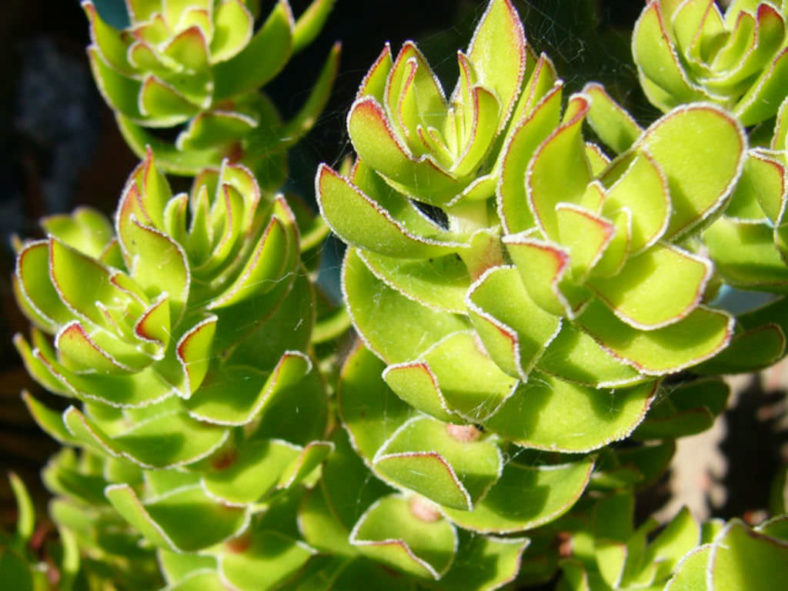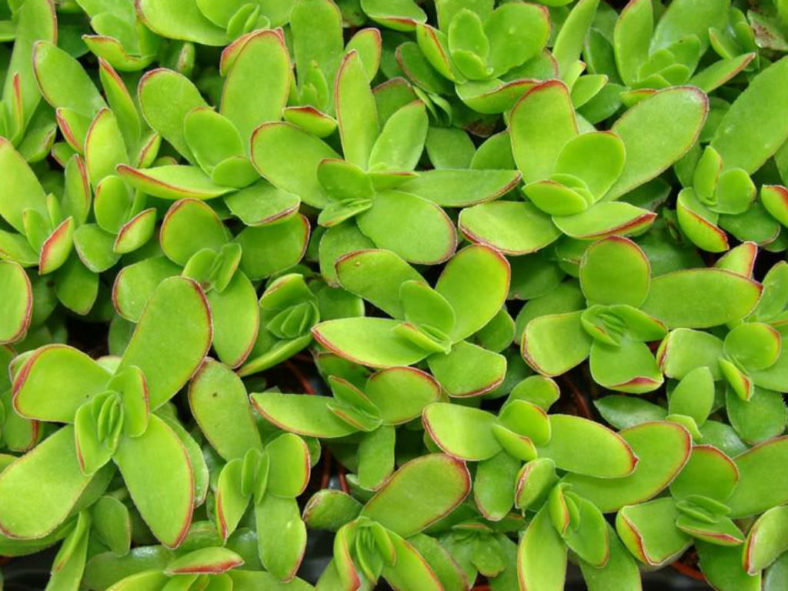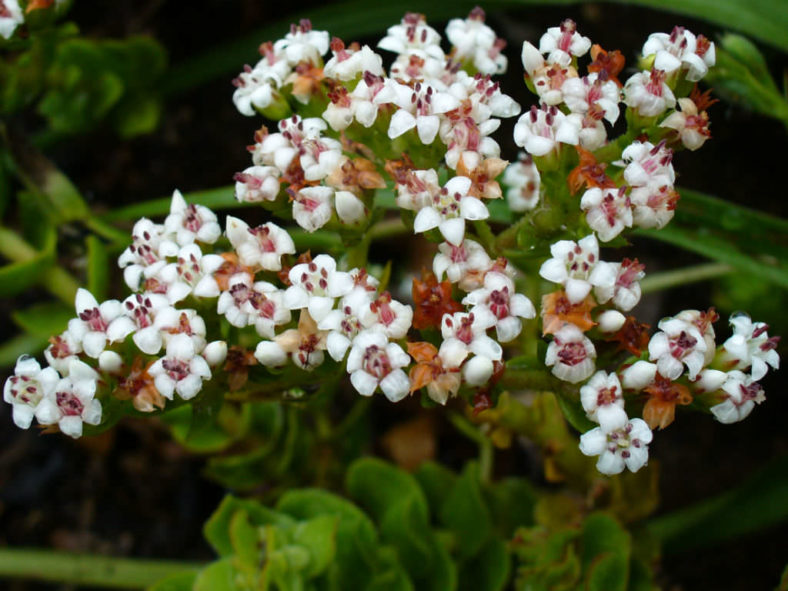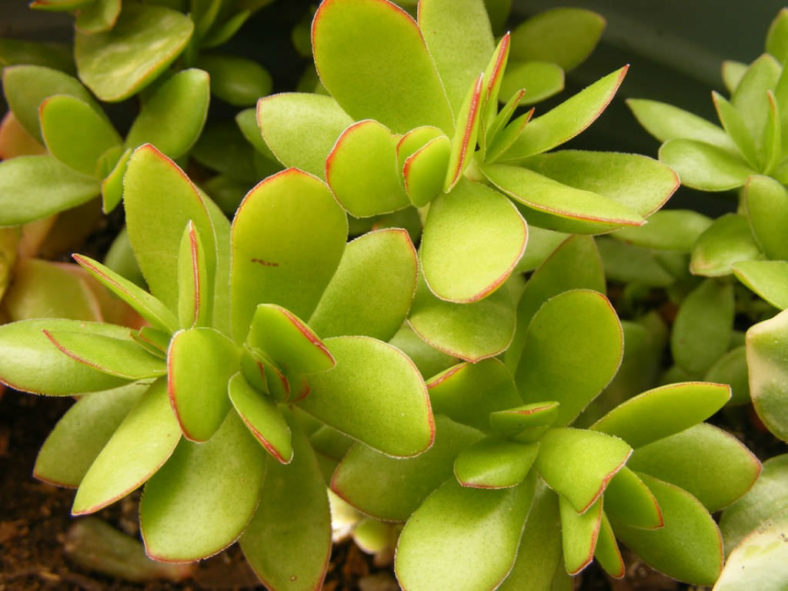Scientific Name
Crassula dejecta Jacq.
Common Name(s)
Doily Crassula
Synonym(s)
Crassula undulata, Curtogyne dejecta, Curtogyne undata, Curtogyne undosa, Curtogyne undulata, Rochea dejecta, Rochea undulata
Scientific Classification
Family: Crassulaceae
Subfamily: Crassuloideae
Genus: Crassula
Origin
Crassula dejecta is native to South Africa.
Description
Crassula dejecta, also known as Crassula undulata, is a densely branched succulent shrublet that can grow up to 16 inches (40 cm) tall. The leaves are slightly fleshy, green, often tinged red, with a row of rounded, bead-like hairs on the margins that give the leaves a silvery edge. They are opposite, more or less the same length on the whole plant, and arranged densely in neat rows up the erect stems, giving a tidy, geometric effect. There are also tiny, downward-pointing hairs on the young branches, giving the stems a silvery dusting.
The flowers are white, sometimes tinged pink, with red sepals, red ovaries that color the center of the open flowers red, and red anthers that age to brown. During midsummer, they are carried in tight, flat to round-topped clusters at the ends of the branches. The flowers develop into small capsules, each holding many tiny seeds.

Hardiness
USDA hardiness zones 9b to 11b: from 25 °F (−3.9 °C) to 50 °F (+10 °C).
How to Grow and Care
Crassulas are easy to grow but susceptible to mealy bugs and fungal diseases. As with all succulents, overwatering is fatal, so err on the side of too dry rather than too wet. Never let your plant sit in water. If you water from beneath by allowing the plant to sit in a saucer, pour off any excess water after a few minutes.
These succulents are generally started by division, offsets, or leaf cuttings. Crassulas can be easily propagated from a single leaf. Sprout leaves by placing them into a potting mix for succulents, then cover the dish until they sprout.
Repot as needed, preferably during the warm season. To repot your Crassula, ensure the soil is dry before repotting, then gently remove the pot. Knock away the old soil from the roots, removing any rotted or dead roots. Treat any cuts with a fungicide. Place the plant in its new pot and backfill it with potting soil, spreading the roots out as you repot. Leave the plant dry for a week or so, then begin to water lightly to reduce the risk of root rot.
Learn more at How to Grow and Care for Crassula.
Links
- Back to genus Crassula
- Succupedia: Browse succulents by Scientific Name, Common Name, Genus, Family, USDA Hardiness Zone, Origin, or cacti by Genus
Photo Gallery
Click on a photo to see a larger version.



